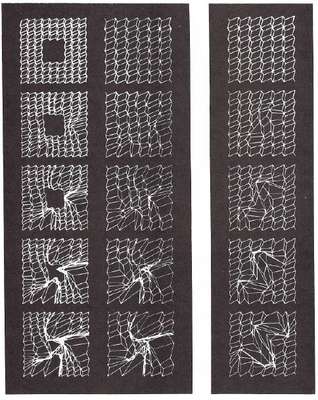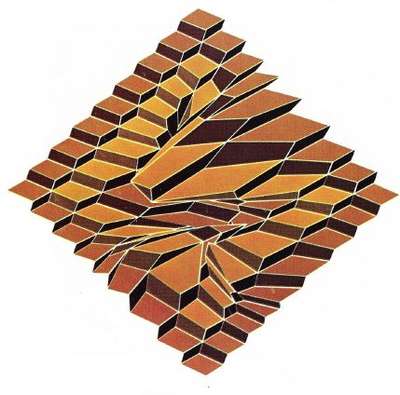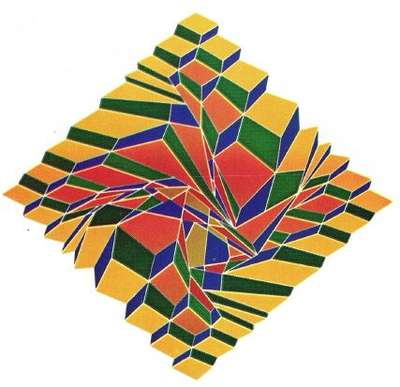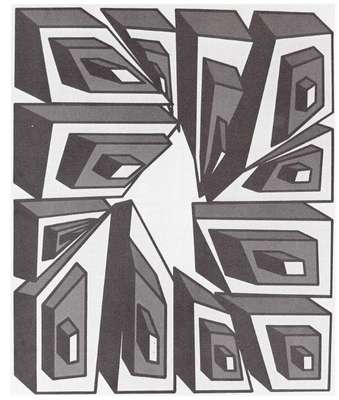Ruth Leavitt’s introduction to computers was via her first husband, Jay Allen Leavitt. Her own background as an artist was in abstract expressionism.
She was a master-class student under Hans Hofmann, with whom she initially studied and practised abstract expressionism. Prompted by her husband who taught at the Computer Science Department at the University of Minnesota, she enlisted the help of computers at an early stage to generate images. “The change has been gradual and I feel I am combining both attitudes, abstract expressionism and constructivism in my work.”
At first, Leavitt worked with generally available interactive software [detail required]. In spite of such interactive resources and the traditional artistic means and similar methods handed down to her, she quickly became dissatisfied, as the seemingly free forms she could design, were locked implicitly into a raster grid. So she designed her own, so-called “stretching program”, which could distort, swivel as well as deform lines and used it to generate paintings and graphics such as the series Diamond Transmutation or Herringbone Variation.
The transition to using the computer involved, as for most of the pioneering artists, writing or commissioning programs to realise a specific artistic intent. In her own case, both variation and distortion were important tools in her computer art work, giving rise to a dynamic that encompassed both constructivist purity and more lyrical tensions.
In addition, at the end of the 1970s, Leavitt produced film animations using a variation of her program. She always considered the computer to be an artist’s manual tool – even though Computer Art was a milestone in the history of art, in so far as the computer embodied a new source of inspiration.
Ruth Leavitt was the editor of one of the earliest compilations on computer art: her book Artist and Computer.
“I became so inspired by the computer’s power to process information and its ability to control other equipment that exploring the possibilities of a tool with memory took precedence over the selection· of content. My art documented the way computers affect seeing, thinking, and constructing art and foretold of its impact on the culture at large.”
5






